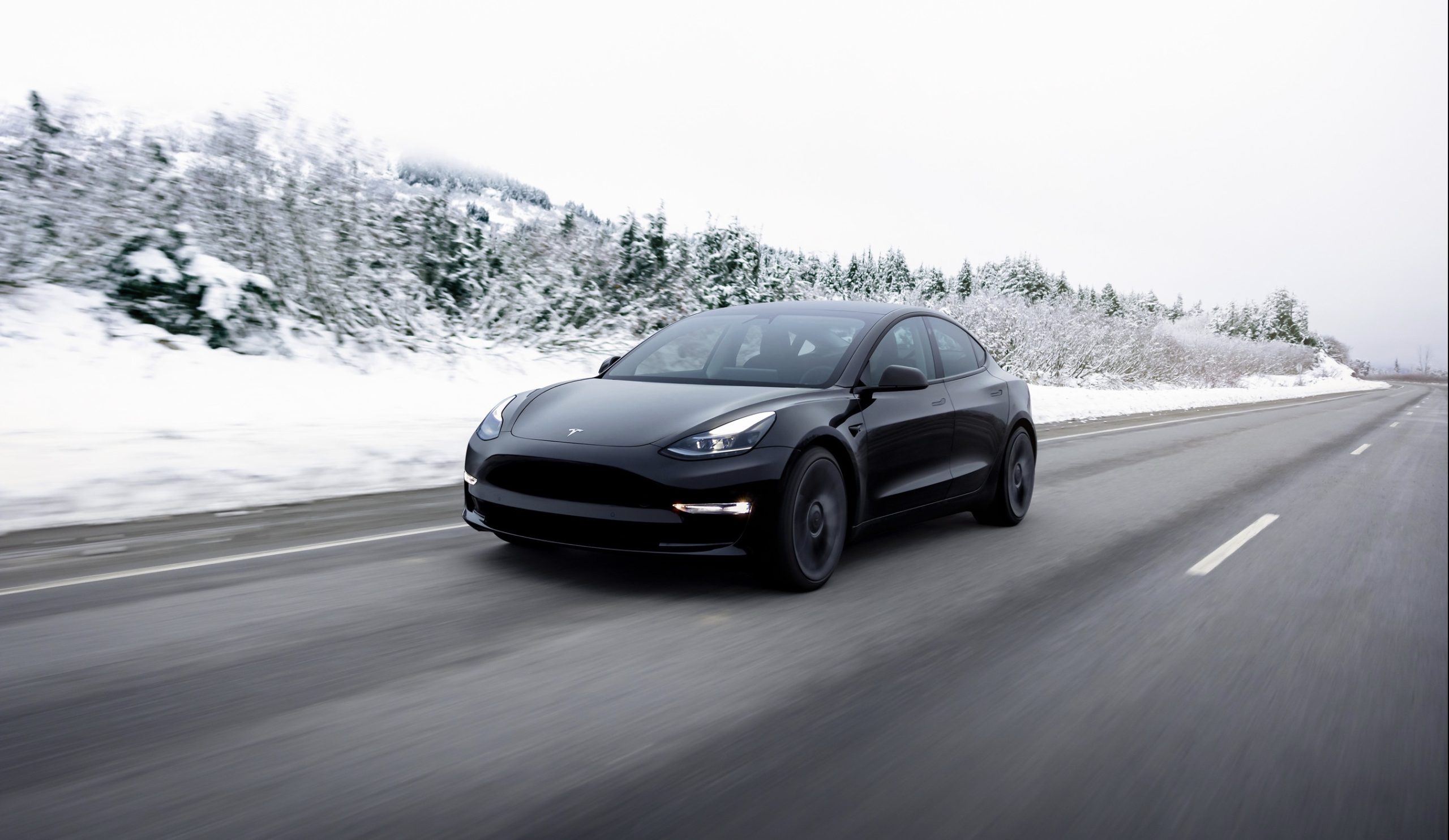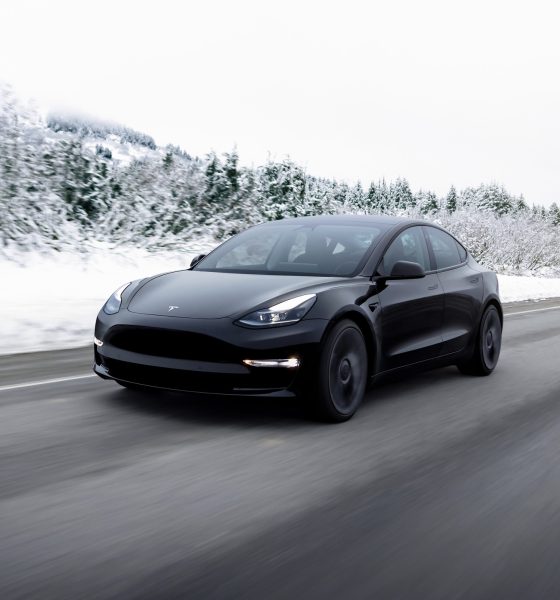

News
Tesla and Nissan get top reliability scores in Consumer Reports’ survey
Tesla and Nissan stand the test of time when it comes to reliability. Consumer Reports gathered data from numerous surveys to see which electric vehicles (EVs) were the most reliable–Tesla and Nissan stood out.
According to Consumers Reports data, the Tesla Model 3 and the second-generation Nissan Leaf were the second and third-most reliable electric vehicles. The 2022 Kia EV6 was the only vehicle to beat the Tesla Model 3 and Nissan Leaf. However, the EV6 still has some aging to do before it can match the Tesla Model 3’s reliability track record.
EVs vs ICE Reliability
Consumer Reports noted that electric vehicles do not yield strong reliability scores compared to gasoline engines.
It stated that, in theory, EVs should be more reliable than gasoline engines. After all, electric vehicles have fewer parts because they don’t have transmissions, ignition and fuel systems, valvetrains, and other elements found in fossil-fuel cars. They also don’t require oil, spark plugs, or transmission fluid.
The difference in reliability comes down to over a century of work legacy automakers have put into refining and tuning the design of fossil-fuel vehicles. Whereas electric vehicles have reconceptualized the idea of a car.
EV automakers are still fine-tuning and refining the design and technology in electric vehicles. Legacy automakers, in particular, are struggling with adapting to the new car form since EVs use new platforms and technology. The cabin of electric vehicles alone is much more advanced than the ICE car cabins. EVs usually have advanced infotainment systems that control many more of the car’s functions while also acting as a source of entertainment.
Electric vehicle owners usually report issues with their cars’ batteries, electric motors, and charging. Some Teslarati readers, who own a variety of EVs from different brands, have shared complaints about infotainment systems, suspension, and service.
The Tesla Model 3 and Nissan Leaf’s Advantage
Hard work, patience, and experience culminated in the strong reliability of the Tesla Model 3 and Nissan Leaf. Unlike other electric vehicles on the market, users report fewer problems with the Tesla Model 3 and second-generation Nissan Leaf. They experience fewer issues with batteries, electric motors, and charging.
Even more interesting is that the Model 3’s reliability outshines that of Tesla’s other vehicles. Tesla has improved the Model 3 quite a bit since sales began. It plans to revamp the Model 3 again soon.
Consumer Reports stated that the Tesla Model S, Model X, and Model Y are still below average regarding reliability. Although Tesla has made significant improvements to the Model Y in recent years that may improve its reliability score in the future.
Model Y owners still report suspension issues and body hardware problems related to the hatch. They also pointed out issues with the Model Y’s paint and trim. Meanwhile, Tesla customers who own Model S and Model X units often bring up air suspension problems.
I’d like to hear from you. Contact me at maria@teslarati.com or via Twitter @Writer_01001101.

Elon Musk
Elon Musk and Tesla AI Director share insights after empty driver seat Robotaxi rides
The executives’ unoccupied tests hint at the rapid progress of Tesla’s unsupervised Robotaxi efforts.

Tesla CEO Elon Musk and AI Director Ashok Elluswamy celebrated Christmas Eve by sharing personal experiences with Robotaxi vehicles that had no safety monitor or occupant in the driver’s seat. Musk described the system’s “perfect driving” around Austin, while Elluswamy posted video from the back seat, calling it “an amazing experience.”
The executives’ unoccupied tests hint at the rapid progress of Tesla’s unsupervised Robotaxi efforts.
Elon and Ashok’s firsthand Robotaxi insights
Prior to Musk and the Tesla AI Director’s posts, sightings of unmanned Teslas navigating public roads were widely shared on social media. One such vehicle was spotted in Austin, Texas, which Elon Musk acknowleged by stating that “Testing is underway with no occupants in the car.”
Based on his Christmas Eve post, Musk seemed to have tested an unmanned Tesla himself. “A Tesla with no safety monitor in the car and me sitting in the passenger seat took me all around Austin on Sunday with perfect driving,” Musk wrote in his post.
Elluswamy responded with a 2-minute video showing himself in the rear of an unmanned Tesla. The video featured the vehicle’s empty front seats, as well as its smooth handling through real-world traffic. He captioned his video with the words, “It’s an amazing experience!”
Towards Unsupervised operations
During an xAI Hackathon earlier this month, Elon Musk mentioned that Tesla owed be removing Safety Monitors from its Robotaxis in Austin in just three weeks. “Unsupervised is pretty much solved at this point. So there will be Tesla Robotaxis operating in Austin with no one in them. Not even anyone in the passenger seat in about three weeks,” he said. Musk echoed similar estimates at the 2025 Annual Shareholder Meeting and the Q3 2025 earnings call.
Considering the insights that were posted Musk and Elluswamy, it does appear that Tesla is working hard towards operating its Robotaxis with no safety monitors. This is quite impressive considering that the service was launched just earlier this year.
Elon Musk
Starlink passes 9 million active customers just weeks after hitting 8 million
The milestone highlights the accelerating growth of Starlink, which has now been adding over 20,000 new users per day.

SpaceX’s Starlink satellite internet service has continued its rapid global expansion, surpassing 9 million active customers just weeks after crossing the 8 million mark.
The milestone highlights the accelerating growth of Starlink, which has now been adding over 20,000 new users per day.
9 million customers
In a post on X, SpaceX stated that Starlink now serves over 9 million active users across 155 countries, territories, and markets. The company reached 8 million customers in early November, meaning it added roughly 1 million subscribers in under seven weeks, or about 21,275 new users on average per day.
“Starlink is connecting more than 9M active customers with high-speed internet across 155 countries, territories, and many other markets,” Starlink wrote in a post on its official X account. SpaceX President Gwynne Shotwell also celebrated the milestone on X. “A huge thank you to all of our customers and congrats to the Starlink team for such an incredible product,” she wrote.
That growth rate reflects both rising demand for broadband in underserved regions and Starlink’s expanding satellite constellation, which now includes more than 9,000 low-Earth-orbit satellites designed to deliver high-speed, low-latency internet worldwide.
Starlink’s momentum
Starlink’s momentum has been building up. SpaceX reported 4.6 million Starlink customers in December 2024, followed by 7 million by August 2025, and 8 million customers in November. Independent data also suggests Starlink usage is rising sharply, with Cloudflare reporting that global web traffic from Starlink users more than doubled in 2025, as noted in an Insider report.
Starlink’s momentum is increasingly tied to SpaceX’s broader financial outlook. Elon Musk has said the satellite network is “by far” the company’s largest revenue driver, and reports suggest SpaceX may be positioning itself for an initial public offering as soon as next year, with valuations estimated as high as $1.5 trillion. Musk has also suggested in the past that Starlink could have its own IPO in the future.
News
NVIDIA Director of Robotics: Tesla FSD v14 is the first AI to pass the “Physical Turing Test”
After testing FSD v14, Fan stated that his experience with FSD felt magical at first, but it soon started to feel like a routine.

NVIDIA Director of Robotics Jim Fan has praised Tesla’s Full Self-Driving (Supervised) v14 as the first AI to pass what he described as a “Physical Turing Test.”
After testing FSD v14, Fan stated that his experience with FSD felt magical at first, but it soon started to feel like a routine. And just like smartphones today, removing it now would “actively hurt.”
Jim Fan’s hands-on FSD v14 impressions
Fan, a leading researcher in embodied AI who is currently solving Physical AI at NVIDIA and spearheading the company’s Project GR00T initiative, noted that he actually was late to the Tesla game. He was, however, one of the first to try out FSD v14.
“I was very late to own a Tesla but among the earliest to try out FSD v14. It’s perhaps the first time I experience an AI that passes the Physical Turing Test: after a long day at work, you press a button, lay back, and couldn’t tell if a neural net or a human drove you home,” Fan wrote in a post on X.
Fan added: “Despite knowing exactly how robot learning works, I still find it magical watching the steering wheel turn by itself. First it feels surreal, next it becomes routine. Then, like the smartphone, taking it away actively hurts. This is how humanity gets rewired and glued to god-like technologies.”
The Physical Turing Test
The original Turing Test was conceived by Alan Turing in 1950, and it was aimed at determining if a machine could exhibit behavior that is equivalent to or indistinguishable from a human. By focusing on text-based conversations, the original Turing Test set a high bar for natural language processing and machine learning.
This test has been passed by today’s large language models. However, the capability to converse in a humanlike manner is a completely different challenge from performing real-world problem-solving or physical interactions. Thus, Fan introduced the Physical Turing Test, which challenges AI systems to demonstrate intelligence through physical actions.
Based on Fan’s comments, Tesla has demonstrated these intelligent physical actions with FSD v14. Elon Musk agreed with the NVIDIA executive, stating in a post on X that with FSD v14, “you can sense the sentience maturing.” Musk also praised Tesla AI, calling it the best “real-world AI” today.








